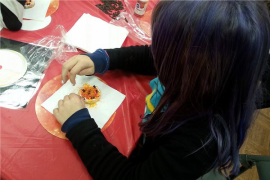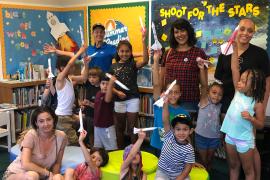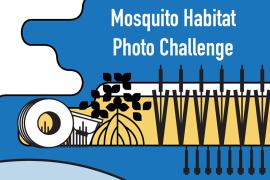On Monday, April 8, 2024, a total solar eclipse will cross North America, passing over Mexico, the United States, and Canada.
A total solar eclipse happens when the moon passes between the sun and Earth, completely blocking the face of the sun. The sky will darken as if it were dawn or dusk. All of the continental United States will experience either a partial or total eclipse.
Are you and your campers planning to watch the 2024 eclipse? Is your camp on or off the path of totality? In either case, you can use the eclipse to excite your campers and your community about the solar system, the universe, and NASA science. Now is the time to prepare!
Eye safety is key during a solar eclipse. Never look at the sun directly unless the sun is completely covered during totality. During the partial eclipse or before and after the total eclipse, you and your campers will need to keep your eyes protected! And remember, sunglasses are not dark enough to let you look at the sun safely. There are many ways to safely view an eclipse, like using specially designed solar viewing glasses and make them stylish and fit. Your campers can also use a box to make their own pinhole projector. Explore more eclipse safety tips at go.nasa.gov/EclipseSafety.
If your camp is along the path of totality, there may be a lot of people both from your community and from other countries interested in viewing the eclipse at your site. The American Astronomical Society has information that may help you and your community prepare.
How does NASA study a solar eclipse? One way is with rockets! On April 8, three sounding rockets will be launched from the Wallops Flight Facility in Virginia before, during, and after the eclipse. Campers can build and launch model rockets; see these activities and the Rockets Educator Guide.
Camps can use the eclipse posters and fliers that NASA has published online. Check the NASA eclipse website and NASA HEAT website for additional resources. Coming soon: webinars you can join to learn more about engaging your campers with eclipse and solar activities!
The April 8 solar eclipse is not the only opportunity to engage with the sun in 2024! The sun is having a big year, so NASA is celebrating the Heliophysics Big Year! (“Helio” comes from the Greek word for “sun,” so heliophysics is the study of the sun). We started the celebration with the October 2023 annular solar eclipse, and the Big Year will conclude with the Parker Solar Probe’s closest pass to the Sun in December 2024. Also, keep an eye out for more sunspots, auroras (Northern lights) and solar eruptions as the sun approaches solar maximum (predicted for 2025). Find out more about how to participate at science.nasa.gov/sun/helio-big-year/.
Here are some additional eclipse opportunities:
- Use of NASA Eclipse Assets: If you are coordinating with NASA on an event, you are welcome to use eclipse graphics developed for partners to connect to the larger Total Eclipse celebration. You may find these graphics here. Official NASA logos are not available for use for event branding, but you may use images and other media found on NASA public websites, in accordance with our Media Usage Guidelines. There are some great visualizations here, and any images and content found on our main Eclipse website are also available for use in accordance with these same guidelines.
- Webinar Recording: If you missed the opportunity to view our information webinar, visit youtube.com/watch?v=dnFvn7o8-L4 to view an archive.
- More Eclipse Information: For more information about the Eclipse path, timing, safety and NASA resources visit science.nasa.gov/eclipses/
Check out the 2024 Total Solar Eclipse Social Media Tool Kit from NASA.
For your reference, the NASA SunSpots are:
- Houlton, ME — Downtown Main Street
- Niagara Falls, NY — Niagara Falls
- Erie, PA — Mercyhurst University
- Cleveland, OH — Great Lakes Science Center
- Indianapolis, IN — Indianapolis Motor Speedway
- Carbondale, IL — Southern Illinois University
- Russellville, AK — Downtown Fire Station
- Dallas, TX — Cotton Bowl and Arboretum
- Waco, TX — Baylor Stadium
- Austin, TX — Austin Public Library
- Stonewall, TX — LBJ National Historical Park
- Kerrville, TX — Louise Hays Park
Carolyn Ng is an education specialist at the NASA’s Goddard Space Flight Center with the NASA Heliophysics Education Activation Team (NASA HEAT). She and her colleagues are building a framework for heliophysics education and coordinating solar eclipse education. With camps and many collaborators, NASA HEAT aims to make the science of understanding our star, the Sun, and its interaction with Earth and the solar system accessible to multiple audiences and learners of all ages.
Christine Shupla is the Science Engagement Manager at the Lunar and Planetary Institute. She serves as a liaison between the NASA Science Activation programs and the American Camp Association.
The views and opinions expressed by contributors are their own and do not necessarily reflect the views of the American Camp Association or ACA employees.



